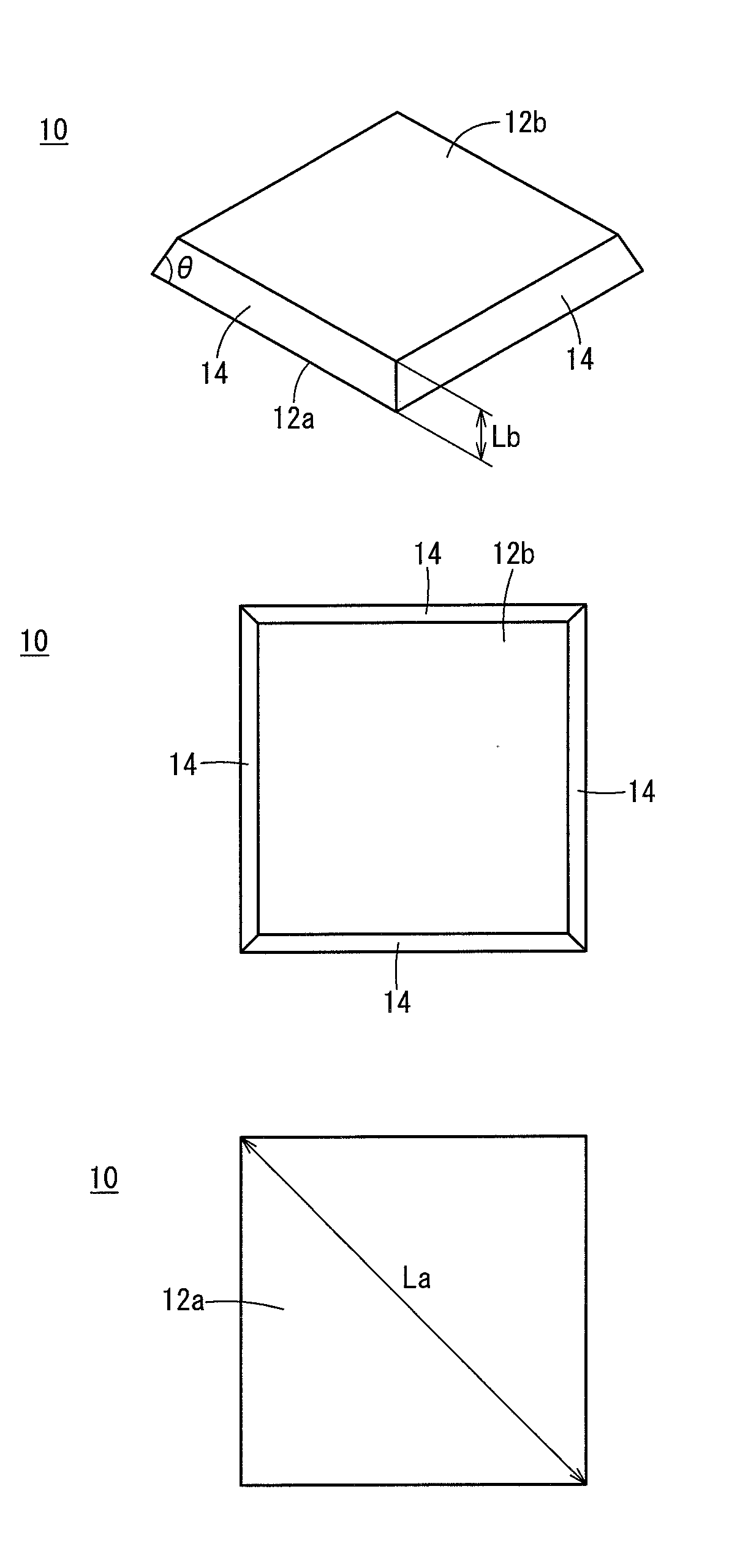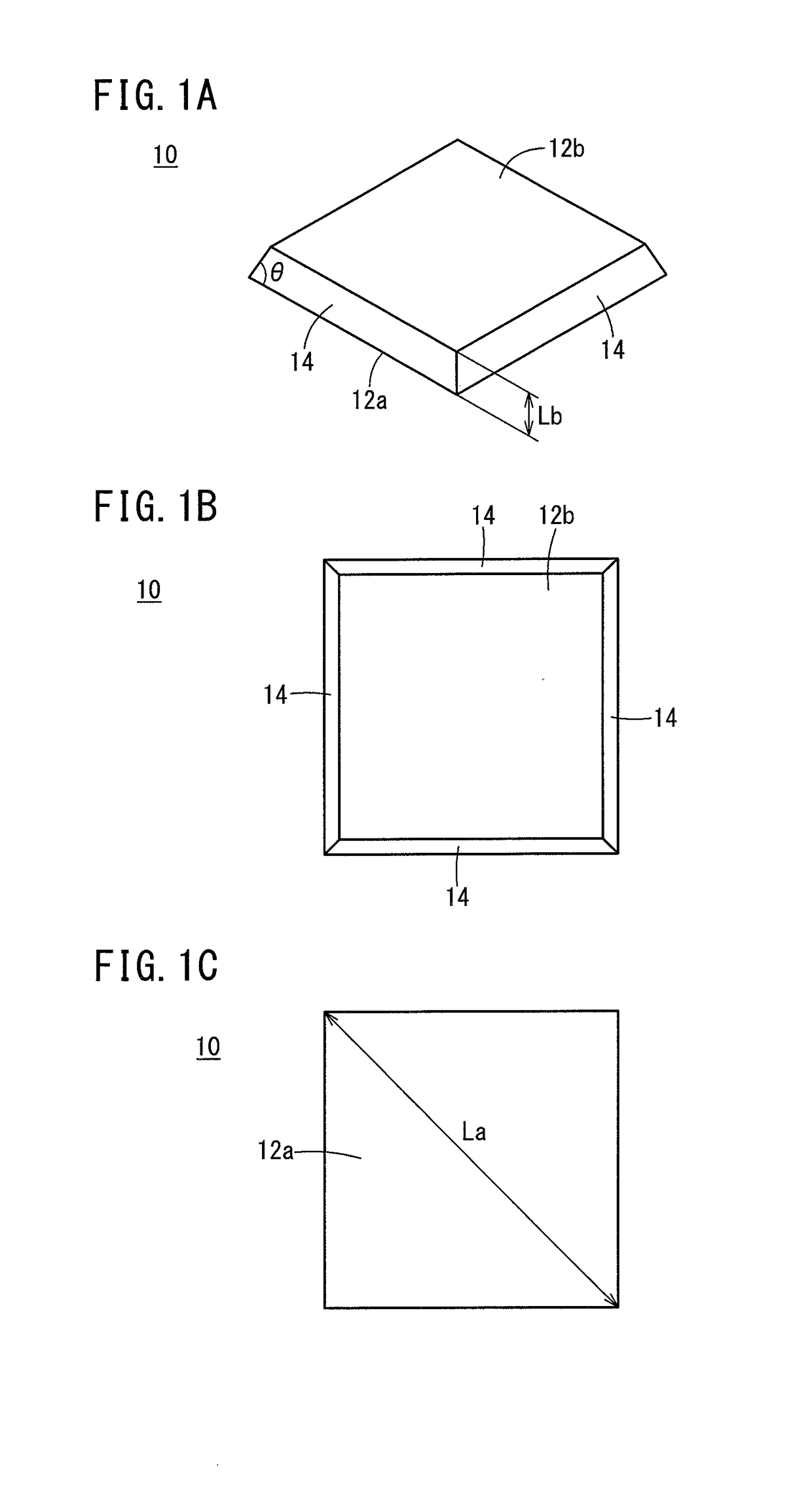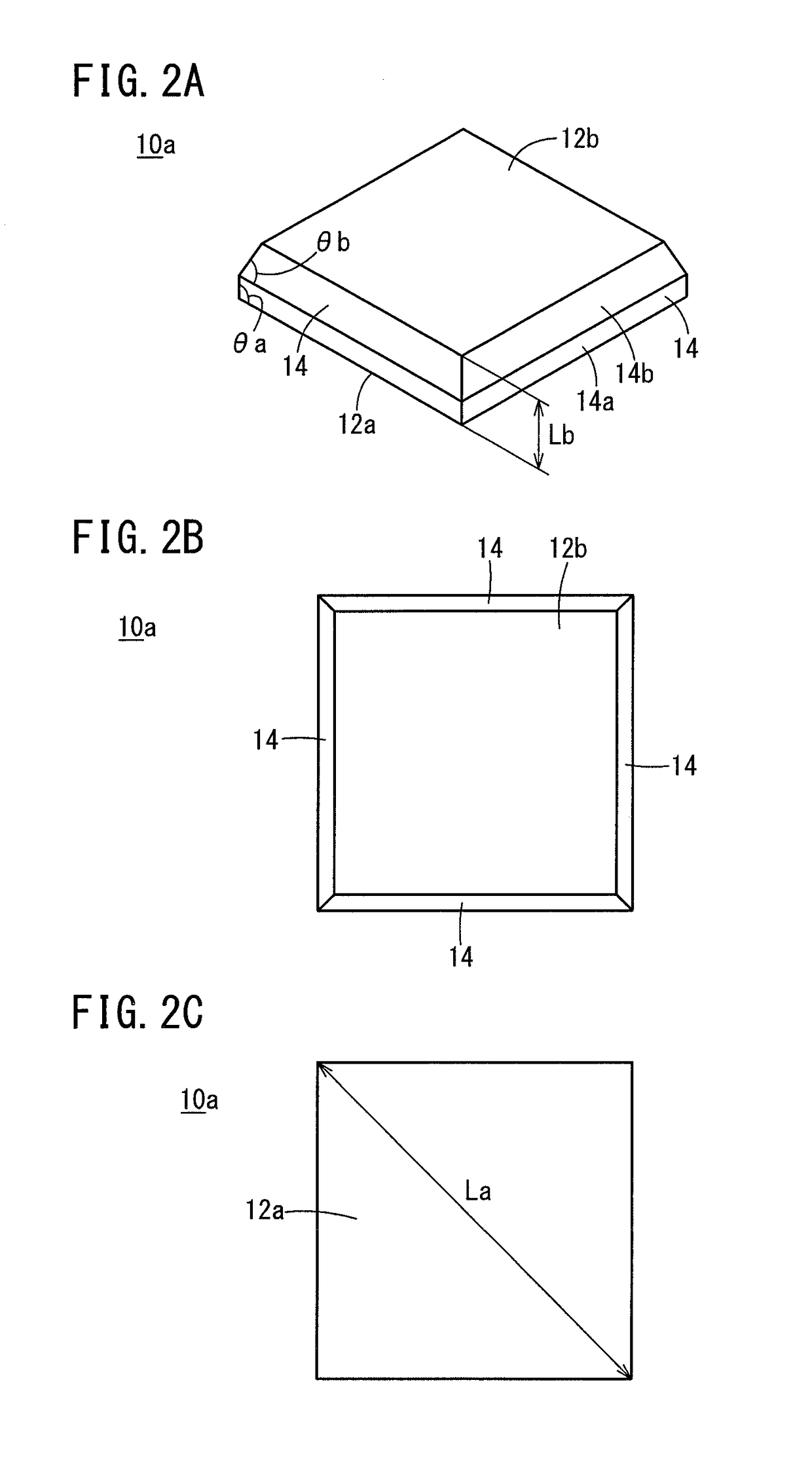Porous ceramic particles
- Summary
- Abstract
- Description
- Claims
- Application Information
AI Technical Summary
Benefits of technology
Problems solved by technology
Method used
Image
Examples
example 1
[0095]Porous ceramic particles each having a porosity of 60% and a minimum length of 50 μm, and an aspect ratio of 10 were used as the porous ceramic particles 10, and a bulk body 20 according to Example 1 was produced according to the above-described first manufacturing method. More specifically, a slurry containing the porous ceramic particles, water, and an adhesive component (having a thermal conductivity of 2 W / mK) was prepared and poured into a mold having a diameter of 20 mm. After drying, the slurry was fired and solidified to thereby produce the bulk body 20 according to Example 1.
[0096]In Example 1, porous ceramic particles 10 were prepared in the following manner. More specifically, a pore forming agent (latex particles or melamine resin particles), a polyvinyl butyral resin (PVB) as a binder, DOP (dioctyl phthalate) as a plasticizer, and xylene and 1-butanol as solvents were added to yttria-partially-stabilized zirconia powder, and mixed in a ball mill for 30 hours in or...
example 2
[0097]Porous ceramic particles each having a porosity of 60%, a minimum length of 100 μm, and an aspect ratio of 8 were used as the porous ceramic particles 10, and otherwise, a bulk body 20 according to Example 2 was produced in the same manner as Example 1.
example 3
[0098]Porous ceramic particles each having a porosity of 60%, a minimum length of 400 μm, and an aspect ratio of 3 were used as the porous ceramic particles 10, and otherwise, a bulk body 20 according to Example 3 was produced in the same manner as Example 1.
PUM
| Property | Measurement | Unit |
|---|---|---|
| Pore size | aaaaa | aaaaa |
| Diameter | aaaaa | aaaaa |
| Diameter | aaaaa | aaaaa |
Abstract
Description
Claims
Application Information
 Login to view more
Login to view more - R&D Engineer
- R&D Manager
- IP Professional
- Industry Leading Data Capabilities
- Powerful AI technology
- Patent DNA Extraction
Browse by: Latest US Patents, China's latest patents, Technical Efficacy Thesaurus, Application Domain, Technology Topic.
© 2024 PatSnap. All rights reserved.Legal|Privacy policy|Modern Slavery Act Transparency Statement|Sitemap



